Psoriasis on the feet is a common problem. It can happen due to hormonal disorders, weakened immune system, and other reasons. It can be cured with the help of drugs, traditional medicine formulas and physical therapy procedures.
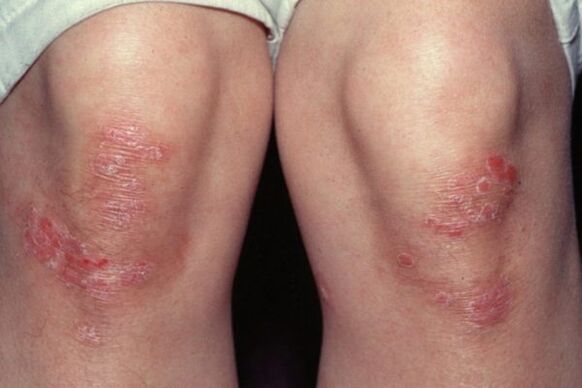
Causes and risk factors of psoriasis of the feet
Psoriasis of the feet is a disease, the cause of which is not known by doctors. However, possible triggers include:
- Genetic. The disease can be inherited (from parents to children).
- Disorders of the work of the central nervous system. Chronic stress leads to disruption of many processes in the body. In many patients, such a rash appears precisely after stressful situations.
- Hormonal disturbances in the body. Disruptions in the endocrine system lead to metabolic disturbances, which stimulate the overproduction of skin cells.
- Weakened immunity. Psoriasis develops against the background of infectious diseases. The risk group includes patients with frequent viral infections and respiratory diseases (bronchitis, tonsillitis).
- Mechanical damage to the skin.
- Climate change.
- Frequent use of certain medications.
- The overuse of hygiene products leads to the destruction of beneficial microorganisms on the skin.
- The use of chemicals.
- Eat foods containing food additives, alcohol.

Classification and symptoms of psoriasis of the feet
There are several types of the disease, each with its own symptoms:
- Popular (smudged, vulgar). The most common type of psoriasis, affecting nearly 90% of all patients. It manifests as a rash in the form of red, rapidly distributed spots on the legs. Small patches, 3 to 4 cm in diameter, in the absence of treatment, can coalesce and form broad patches of rash. It is accompanied by intense itching, which may bleed when scratching. The rash on the knees occurs only with such symptoms.
- Discharge (pustules). This type is rare and occurs in a more severe form. May recur many times. Healing with complex therapy takes a lot of time. A pustular rash with clear fluid that often bleeds, and the patient's skin is constantly burning. This type is observed on the feet and legs.
- Teardrop shape (point). Not very popular. It is characterized by precise eruptions that are red or bright red, resembling a drop of water. Basically, the factor that provokes the emergence of this species is streptococci. Rash localized on the knee.
- Inverse. During the disease appear pale pink pimples, smooth to the touch. There is no flaking, but sometimes slight peeling of the skin can be observed. These pimples do not rise above the surface of the skin, they are concentrated on the inner surface of the thighs.
- Psoriatic nail dystrophy (nailoid psoriasis). From the name, it is clear that this disease affects the nail bed and the skin around it. Indentations appear on the nails in which the color of the nail plate changes (turns yellow or turns white). Spots appear on them, they become brittle. Sometimes it bleeds under the nail. The separation of the nail from the soft tissues occurs - onychomycosis. Then the scars appear.
- Erythema psoriatic. Manifestations are redness, peeling of the skin, unbearable itching, swelling and swollen lymph nodes. Erythroderma has a wide range of lesions - from the groin area to the feet.
- Psoriasis on the feet. This disease brings a lot of trouble to the patient. While walking, wounds and cracks appear, bleed continuously and interfere with walking. The blisters are localized on the heels, around the fingernails, on the pads of the fingers and between them. The constant rubbing causes irritation accompanied by itching, scratching a lot can lead to a fungal infection. To some extent, perspiration contributes to the development of rashes on the feet. Sweat is an excellent breeding ground for the growth of pathogens that cause inflammation.
- Psoriatic arthritis (psoriasis of the joints). This type develops not only on the epidermis, but also on the joints. Psoriasis affects the knees and knuckles. The main symptom of the development of arthritis in the legs is the curvature of the joints and their change in size. As a result, joints and limbs are disordered (a small bone near the finger appears). The dermis in this place elongates and becomes burgundy, swelling can be observed.
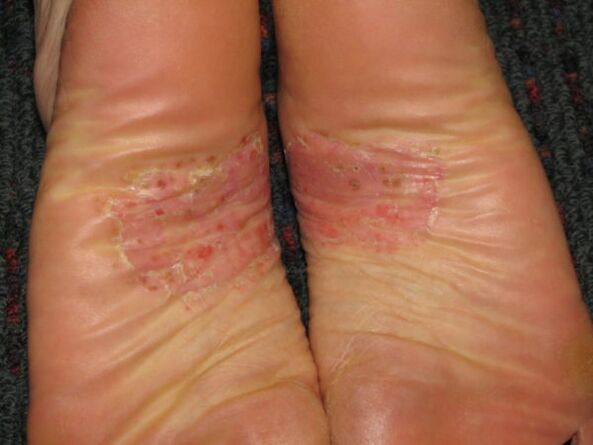
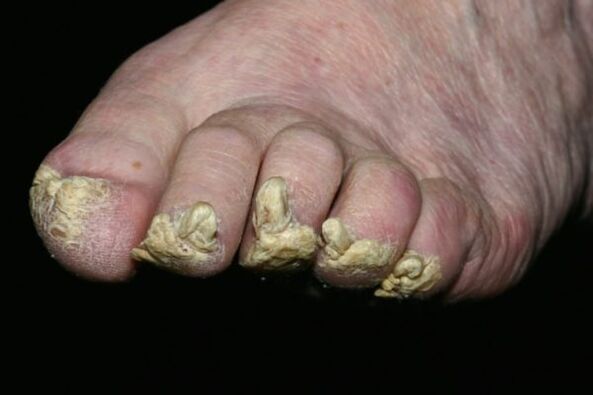
Drug treatment for psoriasis
The treatment of psoriasis depends on how advanced the disease is.
- - Light-weight. To treat this mild disease, topical therapy is used (ointments, creams, gels). Salicylic and zinc ointments show good results. To achieve high therapeutic results, people use complex therapy that includes drugs with a hormonal and vitamin component. They use drugs that include a medicinal substance - dithranol.
- Average. In order to treat disease at this level, all treatment methods are important to eliminate all symptoms of the disease. Along with drug therapy, laser therapy, phototherapy, as well as electrophoresis (removal of harmful substances from the blood) and cryotherapy (cold treatment) are used. In case of complications, corticosteroid ointments are prescribed: hydrocortisone, cortisone.
- Heavy. This degree is the most difficult and requires treatment by all means and methods to relieve the symptoms of foot psoriasis. In these cases, medications are prescribed to suppress the immune response, antihistamines, and antibiotics.
Physiotherapy for Psoriasis
Physiotherapy is an effective addition to the pharmacological treatment of psoriasis. In medical practice, there are several methods of physiotherapeutic procedures:
- Light therapy for legs. UV radiation is the most effective treatment for psoriasis. The method involves exposure to ultraviolet light in a medical facility. No side effects were found, it did not affect the body. After phototherapy, the plaques are reduced, and in 80% of cases, the patient recovers completely.
- Cryotherapy method. The method is based on cold treatment. The course can last from one to six months. With psoriasis of the legs, a local procedure is prescribed, when cold is directed only to certain lesions. These therapies help reduce itching and inflammation, promote tissue repair, and slow the formation of new scabs.
- UV blood count (plasmaphoresis). This method in medicine is relatively new, its outstanding feature is that it gives quick treatment results. The essence of the procedure is that a tube is inserted into a vein, through which blood is poured into a vessel located in a special device. There, the blood is exposed to UV radiation and then returned. The procedure is performed with complete aseptic.
- Puva therapy. The treatment is indicated for patients with severe psoriasis. It is based on the use of psoralens - substances that increase the sensitivity of cells to ultraviolet radiation. The method is highly effective, after 25 sessions, the rashes almost disappear.
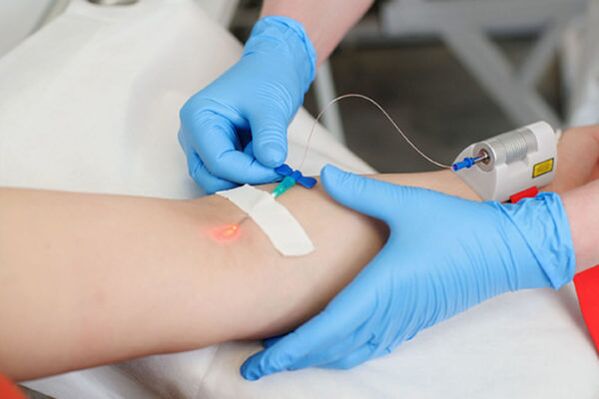
Traditional medicine recipe for psoriasis
- Many patients use traditional medicine to treat the disease. It can be tincture, bath water, lotion, decoction. Various herbs are used to cleanse the skin, such as calendula, chamomile, celandine. They can reduce inflammation and the sensation of heat.
- Water use. For the broth, you must use a bunch (2 tbsp), celandine (1 tbsp), licorice root (2 tbsp) and oregano (1 tbsp). All herbs are mixed well and soaked for 20 minutes. Broth is drunk in half a glass 2 times a day. This remedy is effective for mild psoriasis.
- Ointment. There are many folk recipes for making ointments based on birch sap.
- Mix birch sap (50 ml) with olive oil (50 ml). Apply the resulting ointment to the painful area of the skin, preferably before going to bed, wrap it with gauze. Rinse with warm water in the morning.
- Birch oil (30 ml), castor oil (30 ml), honey (60 grams) and 2 eggs. Mix all the ingredients and leave in a cold place for 2 days. Apply the ready-made mixture daily for a month.
- Bathroom. Traditional medicine offers the treatment of foot ailments using baths based on celandine. Cedarwood contributes not only to the elimination of rashes, but also to the elimination of the causes of the manifestation of the disease. Herbs are poured with boiling water and soaked for an hour. Strain the infusion and add to the foot bath. Bath time should not exceed 15 minutes.
- Compressor. In addition, with psoriasis on the legs, applying a potato compress will help. To prepare such a compress, you need to grate the potatoes and put the prepared composition on your leg, wrapping it with cling film. Compression time should not exceed three hours.
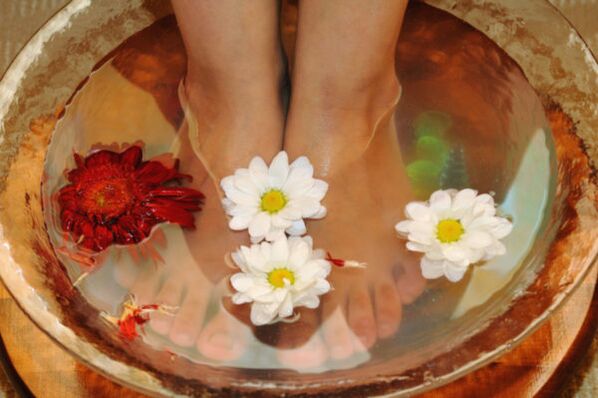
Diet
Diet plays an important role in psoriasis. In the period of severe inflammation, it is necessary to observe a number of dietary rules. Do not eat smoked, salty and fatty foods. Sweets, citrus fruits and dairy products are also contraindicated in case of illness. Drinking alcohol is strictly prohibited.
Complications and consequences
Any disease, if left untreated, can lead to serious complications. Psoriasis on the feet can lead to the following consequences:
- the appearance of pain when walking;
- common psoriasis can develop into erythroderma;
- the presence of other infections;
- violation of metabolic processes;
- reduce the protective functions of the epidermis;
- violation of skin thermoregulation.
Prevention of foot psoriasis
If you follow all the precautions, then psoriasis can be prevented. Prevention recommendations:
- treat your feet with antibacterial and nutritional preparations;
- treat toenails to avoid fungal infections;
- solar treatments;
- when wearing closed shoes must ventilate the foot;
- regular physical activity.
The main rule in the prevention of any disease is adherence to a healthy lifestyle.

























